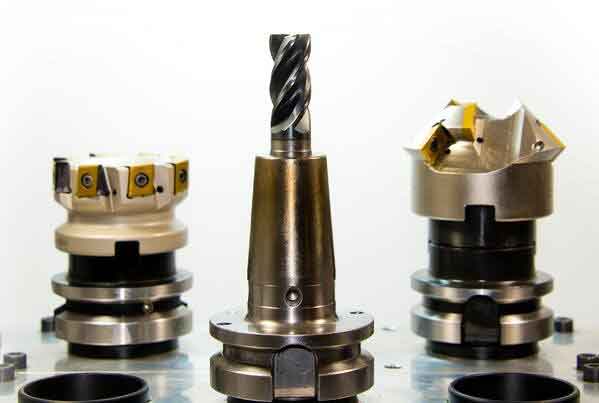Both CNC vertical and horizontal machining allow intricate designs to be crafted from a full range of materials; ceramics, plastic compounds, composites, specialty metals and alloys, and castings are just the beginning. Any material that can be cut is compatible with these sophisticated tools.
What is a CNC Vertical Mill?
The process of milling uses a specialized rotary cutting tool to remove material from a workpiece surface. The process can be used for cutting and creating details, such as holes or notches, as well as for sculpting a three dimensional piece.
Unlike drilling or traditional cutting, the tool in a mill advances perpendicularly to a workpiece on a dedicated axis, performing countless unique, small cuts to remove material from a surface in chips.
>> Read more about our diverse CNC capabilities
With Computer Numerical Control (CNC) technology, machinists and engineers can control vertical milling machine operations using sensitive computer systems. These systems collect design information directly from drawings and models in CAM or CAD software, which is converted into codes (NC code, G-code, and ISO code) and then translated into operational commands through the system.
A CNC vertical mill machine has cylindrical cutters oriented vertically on a spindle axis. This is especially useful for plunge cuts and drilling; these tools are considered to be the best for diesinking applications. With CNC technology, the tools in some vertical machining centers can be manipulated on up to five axes for the fabrication of custom shapes, slots, holes, and details in three-dimensional parts.
CNC Vertical Tools and Machining Variations
Vertically oriented CNC tools are effective for a wide assortment of operations. While vertical mills are the most common type of CNC equipment, other useful tools include:
- CNC Vertical Lathes — Available in a wide variety of sizes, these tools can make fast, precise cuts and hold extremely tight tolerances. They can be found combined with machining centers for single setup milling and turning.
- CNC Vertical Machining Centers — The most common piece of CNC equipment, these complex tools are the easiest CNC mills to program and a key component of many machine shops. Best for short runs and small sizes, these systems can come fully equipped with an assortment of tools and tool changers, magazines, and carousels. They also offer coolant and fluid systems and specialty enclosures.
- CNC 5-Axis Machines — Among the most advanced milling machine centers, these tools can be manipulated across five axes to produce three-dimensional parts with high levels of complexity, precision, and speed for even the most difficult designs.
Industries and Products
Vertical CNC milling allows an operator to easily access and monitor cutting operations: they’re in clear sight. Vertically oriented machining is also best for diesinking work.
The simple setup and programming process of CNC vertical equipment allows for straightforward operation and work holding, making it an ideal solution for small parts and short runs. It can be used to produce high-quality precision parts for:
- Electronics
- Medicine
- Security
- Commercial and building applications
- Automotive and transportation
- Recreation
- Industrial projects
Its ease of setup also makes CNC vertical machining an excellent choice for prototype applications.
Contact the China Complex Parts Engineering Team today for more information on CNC vertical milling machines, or check out our page links posted below to further educate yourself:


